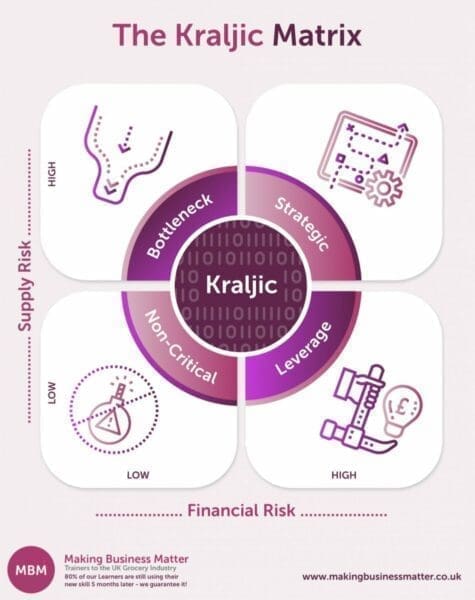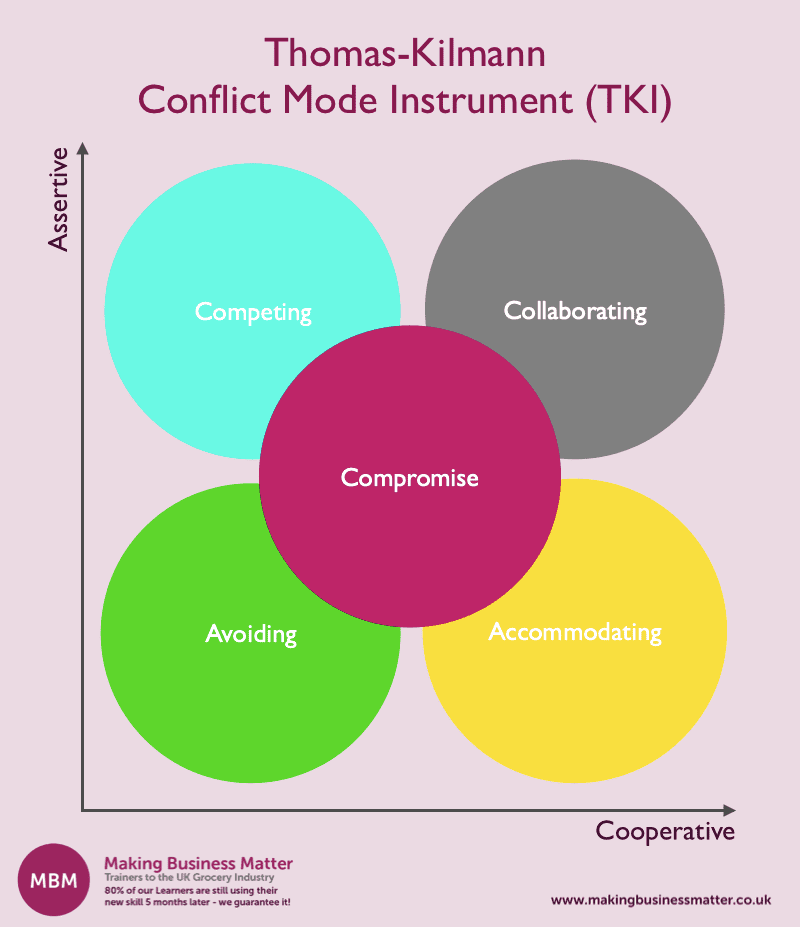Negotiation Doesn’t Have to be About Loss
Win-Win negotiation is the key to long-term supplier/buyer relationship success. In today’s business world, the aim isn’t about battering your suppliers down to get the best price. It’s about longevity in the product that you’re buying. And also understanding the whole supply chain to minimise risk to the business is a much more effective approach.
A Bit of History
Win-win negotiation all began in 1980s American, with a Sociologist called Irving Goldaber. He believed that there didn’t need to be any losers in a negotiation. Confrontation doesn’t help in achieving the goal. For him, successful negotiation resulted from ‘both sides treat[ing] each other in a civil way’. The key was not to look for compromised but for ‘new promises’.
Goldaber developed techniques for hostage negotiations for the police and worked on social conflict resolutions.
For years unions and teachers were at loggerheads in regards to pay and benefits. The unions wanted the districts to pay 100% of teachers medical insurance. However, the districts wanted teachers to contribute to the cost. The win-win solution instigated by Goldaber, brought an agreement that 100% would be paid for by the district.
Alongside this, a new fitness program for teachers was to be implemented. This featured classes on quitting smoking, weight loss and blood pressure reduction programmes. Both parties came away winners! The unions got exactly what they wanted in regards to the full benefit. With the districts knowing that less medical expenses would be required with a healthier bunch of teachers!
This strategy improved the relationships between unions and teachers with the districts they served. Proving that win-win negotiation was highly effective and long-lasting.
What are the Benefits for Business?
You’ve been introduced to how win-win began, and how it benefited the social/political world. But what are the benefits for business?

In today’s world where there are more factors to consider than just the price and quality of a product. The win-win approach is imperative to buyers as it focuses on more widespread issues.
Yes, the price and the quality of the product that you’re buying is still important, but Corporate Social Responsibility considerations are just as key.
You should seek to understand the full supply chain so that you can give customer a guarantee that the materials/products used are sustainable. You also need to show that your business is doing its due diligence to ensure that no slave labour is used for production.
By using win-win strategies, you can gain a greater understanding of your suppliers. This then gives you increased knowledge of the supply chain that you’re part of.
You will build stronger relationships with suppliers as you both gain a clearer understanding of each other’s businesses. Which in turn creates loyalty.
Collaborative Approach
By using the collaborative approach, you are setting up or maintaining a long-standing relationship with your supplier. Therefore the supplier will always act in the best interests of both parties. If there is a cost issue down the line, they’ll discuss it with you to find a solution.
If a win-lose approach is used, there is a possibility the supplier who has lost out will cut corners. The specification could be reduced to a lower quality without informing you and the service could suffer. This will always damage the relationship. So make sure the correct approach is applied for a continued high-quality product with good service if the product is vital to your business.
If you have a strong and secure relationship with a supplier, and you have worked collaboratively in the past, they are more likely to help you if needed in the future. For example, if the ordering team have forgotten or placed a wrong order and the mistake is identified, they will be more likely to make sure the relevant departments on their side pull out all the stops to meet the required deadline.
With the use of win-lose methods in negotiation, where your gain, the suppliers lose. There is always the possibility that the supplier may eventually not be able to sustain what was agreed. In extreme circumstances, if your business is a large percentage of their business overall, they may even be forced to cease operations. This will eventually lead to a lose-lose scenario, as your business will be without the product altogether.
Sticky Learning ® is 7 times more effective than 1-day training courses. Plus, you will get a Chain of Evidence proving your Return on Investment. Discover soft skills training that changes behaviours long term.

When Should the Win-Win Model be Applied to Business Negotiations?
There are five negotiating strategies of which each style can be adopted for a particular negotiation. Before you can decide on which strategy is the best course for the negotiation, firstly, you need to analyse your supplier base and categorise them based on the value of the product to your business. You also need to evaluate the supply market.
The best way to do this is to use the Kraljic Matrix. This is a matrix of quadrants, categorising your products and suppliers into critical, leverage, bottleneck or routine, non-critical items.

If the product is vital to the business and there are limited suppliers in the market, then strategically you’ll need to build a strong, long-term relationship with that supplier. Eventually, each business becomes a partnership with the other. The long-term goal for this approach is a win-win result.
This is in contrast to a high volume, a low-value product which is readily available, in which instance a buyer would use a transactional style, as there is low risk in the supply base. In Kraljic’s Matrix, this is for routine products, and the example given for this approach is stationary.
Once the supplier has been identified as critical to the business, you know that your strategic approach is a win-win.
Strategic Approaches in Negotiation
Thomas Kilmann describes five strategic approaches that can be used in a negotiation.
Competing is one of the differentiated negotiations, and results in a win-lose scenario. One side is dominant in the negotiation and shows high assertiveness at the expense of the other party. This style should be used for routine products identified in the Krajlic Matrix and is where the buyer is dominant over the supplier.
The accommodating approach also results in one winner and one loser. Where one party has a high level of co-operation alongside low assertiveness. This is where one party neglects their own concerns and concedes. The accommodating approach can be a benefit in some situations, such as working on long-term projects with the other supplier. If you concede now on a low-risk point, it may benefit further down the line in the project.
In an avoiding strategic approach, neither side gains what they set out initially. The parties don’t want to negotiate and avoid any issue raised. This results in lose/lose where neither party gains.
For a win-win result, both sides need to have high cooperation and high assertiveness. This is described as collaboration and is the approach to take for supplier management of critical business items.

How is the Win-Win Model Applied for a Successful Negotiation?
There are four factors to making win-win negotiations a success: time, effort, open communication and creative thinking.
Be Prepared!
With negotiation for a critical product, you need time to prepare. Set up a cross-functional team to ensure you know the specification required, taking into account the objectives for all departments.
Spending time preparing will save time later in the negotiation, as they’ll be less going backwards and forwards on points.
As part of the preparation, you’ll need to create a checklist of what your non-negotiables are and what factors you could concede. Know your BATNA! A BATNA is your best alternative to the desired outcome if the negotiation fails. To identify this, list all alternative outcomes. Evaluate each one in order of importance to your desired outcome. So that you always have something to fall back on.
Create a critical path so that you’re aware of your deadlines and ensure that all parties involved are aware of the timelines. Make sure you have enough time for the negotiation prior to the initial conversations.
Do your homework! What do you think the other side wants? Research as much as you can by speaking to someone you can trust in their business. Or speak to your counterparts in a competitors business. Think back to past conversations, is there anything they have said that will give you a clue to their future aims for your relationship? Try to gauge what they might want and prepare for possible solutions.
Team Effort
A successful win-win agreement will all depend on the effort put in from both sides. From the effort put into preparation, to the effort of both sides to put in the work to reach a successful agreement. This is a team effort where both sides collaborate and explore options, working towards a common goal. For a long-standing relationship to succeed, both parties need to see and trust that their counterparts are putting in the same effort to their shared goals. Always remember this is a collaboration!
Talk, Talk, Talk!
Forget the cloaks and dagger negotiation. Be ready to be totally honest with your supplier so they understand your requirements, restrictions, and objectives. This is in regards to specification, time, policy requirements and of course, cost. Remember, this is a partnership, not a poker game!
Set out at the start of the negotiation your intention for mutual benefit. The supplier can then prepare based on the same approach and will start the conversation off with an open mind. The more honest you are the more you can work together to achieve each other’s goals. Open communication is key for this.
You need to put yourself in your supplier’s shoes to understand their position. Use your active listening skills, take what you hear onboard and use what you have learnt to help them help you. If they know that their position is considered, they’ll be more receptive to your requests.
Rather than using emotional language, the use of objective criteria will structure the negotiation and give neither side the chance to argue. With clear data, set out legal requirements and technical requirements, it will be easier to ascertain what is required and will help to reach a solution.
Throughout negotiations use collective language, such as we, our, us. The other side will then trust that you’re working as a team for a shared benefit. The discussions should be positive, so avoid confrontation.
Ditch the Spreadsheets for Some Colouring in!
You’ve put the time in for preparation. You’re ready to put in the effort for a common goal, which can be achieved by honest, open communication. Now, the next step is to work together and get creative!
When you think of creativity, negotiation wouldn’t usually spring to mind. You’d think of the arts world rather than business. Or if the business world, it would be more of a marketing thing (the colouring in department), rather than sales or buying! Creativity is vital for a successful win-win negotiation. So ditch the spreadsheets (well maybe just put it to one side for a while), and get colouring!

This will involve some brainstorming sessions with the identified team. You need to be flexible to reach the solution. This doesn’t mean be flexible with concessions to your supplier, but flexible in your thinking.
Summary
The structure of a successful negotiation needs to take the below form:
- Use the Kraljic Matrix as a tool to identify the best negotiating method for the specific product or service.
- For highly critical products with low choice in the marketplace, a collaborative approach is the key to success.
- Undertake the negotiation process, with at first detailed preparation.
- During the process have clear, open communication and work as a team effort.
- Be creative and flexible. To create a win-win scenario where both you and your supplier come away feeling as if you have achieved your goal.
Action: For even more useful content on negotiations, check out our ultimate guide on negotiation skills.




